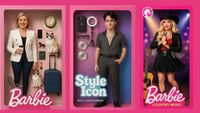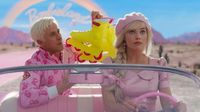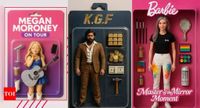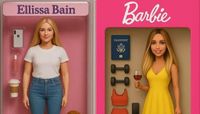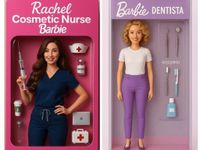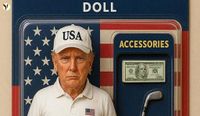The internet is buzzing with a new trend that has taken social media by storm: the AI Barbie Box Challenge. Users are transforming their photos into personalized Barbie dolls using ChatGPT, creating a wave of custom action figures that are both charming and nostalgic. This trend follows closely on the heels of the Ghibli art style phenomenon, showcasing how artificial intelligence can fuel creativity and self-expression online.
In this latest craze, individuals upload a clear photo of themselves and provide a specific prompt to generate a stylized image of themselves as a Barbie doll, complete with accessories and a custom-designed box. The results are packaged in a way that mimics the glossy, vibrant toy boxes reminiscent of early 2000s Barbie advertisements, making the creations feel like collectible items straight from a toy store.
According to a recent post on social media, "🚨 New ChatGPT Trend: AI Action Figures! Upload a pic of yourself or any character + a prompt ➡️ Get a custom action figure packaging and all! I tried 4 characters. The results? INSANE. #AI #ChatGPT #GenAI #AIArt #OpenAI #AIGenerated" This encapsulates the excitement surrounding the trend, as users eagerly share their creations across platforms like Instagram and TikTok.
To create your own AI Barbie doll, the process is remarkably straightforward. First, users need to visit the ChatGPT platform, either through the app or the website. After logging in or creating an account, they upload a clear, full-length photo that captures their outfit. Next, they paste a prompt to guide the AI, such as: "Develop a realistic action figure (Barbie doll) of the person in this photograph. The toy's name is written at the top of the box. You have to insert your own name there. The toy's accessories, which include -- insert the items you want --, are included in the packaging alongside the figure."
For those who want to refine their creations, the AI allows for adjustments and iterations until users are satisfied with the final product. Many have taken to social media to showcase their results, with one user exclaiming, "Can we talk about how CUTE these action figures are?! Like… is this not giving main character energy? ChatGPT is seriously fueling my delulu era. I didn’t know I needed a mini-me until now!"
The trend has not only captivated everyday users but has also attracted the attention of celebrities, politicians, and brands who see potential marketing opportunities within this playful framework. Many are leveraging the trend to engage audiences, showcasing their own AI-generated dolls alongside promotional content. The hashtag #BarbieBoxChallenge has exploded, with countless users sharing their unique creations and experiences.
Interestingly, this trend follows the earlier success of the Ghibli-style art trend, which had its own share of controversy. The co-founder of Studio Ghibli, Hayao Miyazaki, has previously expressed his disdain for AI in art, stating, "I am utterly disgusted. I would never wish to incorporate this technology into my work at all." This sentiment raises important questions about the ethical implications of AI-generated art and its impact on traditional artists.
Despite the ethical concerns, many users are simply enjoying the fun and creativity that the AI Barbie Box Challenge offers. The trend fosters a sense of nostalgia while allowing for a modern twist on self-expression. Users can create dolls that reflect their personalities, complete with accessories that represent their hobbies, jobs, or inside jokes. Items like laptops, cocktails, and even beloved pets often accompany the dolls, adding a personal touch to each creation.
As the trend continues to gain traction, it's essential to recognize the evolving relationship between technology and creativity. While the AI Barbie Box Challenge is a playful exploration of identity and self-expression, it also highlights the need for discussions around originality and fair compensation in the digital age.
To join in on the fun, users can follow these steps: open the ChatGPT app or website, upload a photo, and use a detailed prompt that includes their desired accessories and personal touches. The more specific the prompt, the more accurate and personalized the resulting doll will be. Users are encouraged to experiment with different prompts and accessories to create their ideal mini-me.
As this trend sweeps through social media, it serves as a reminder that the internet can still be a space for creativity and joy. The AI Barbie Box Challenge not only allows users to engage with emerging technologies but also invites them to celebrate their individuality in a whimsical way. So why not give it a try? Share your creation using the trending hashtags and see how your digital doppelganger turns out!
In conclusion, the AI Barbie Box Challenge is more than just a fleeting social media trend; it represents a convergence of nostalgia, creativity, and technology. As users embrace this playful challenge, they also contribute to a larger conversation about the role of AI in art and self-expression in the modern world.
